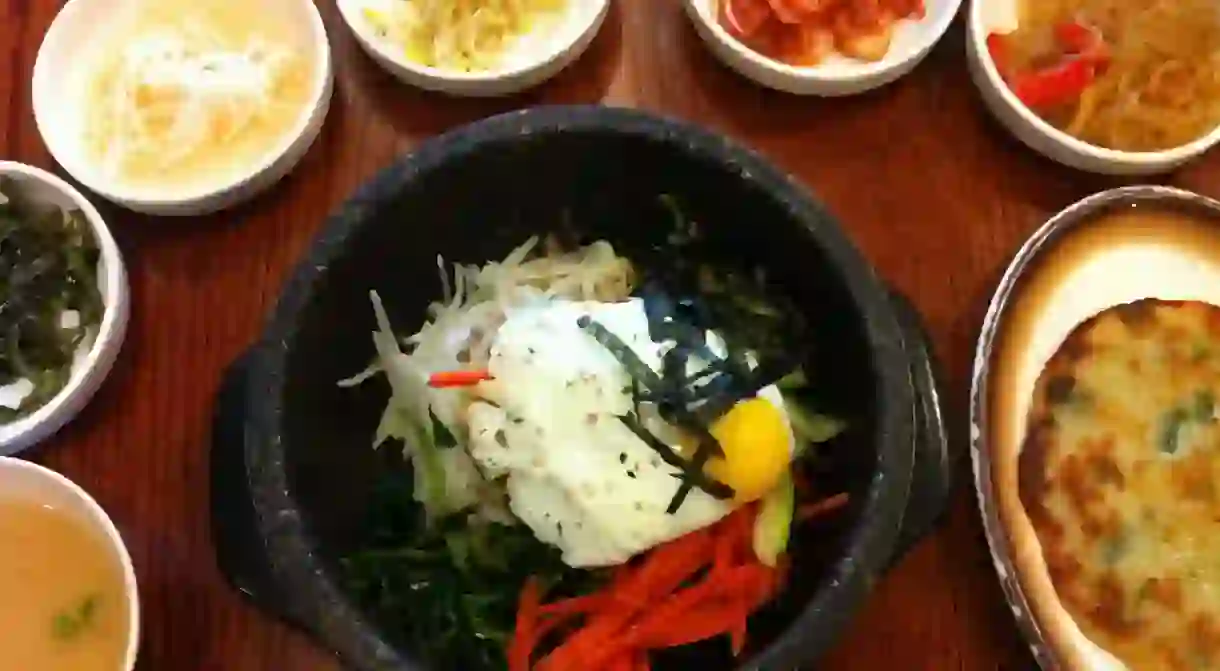The Best Korean Dishes for Vegetarians

South Korean cuisine may be on the meat-heavy side, but that doesn’t mean you can’t find plenty of tasty fare for vegetarians. Here’s our guide to the best animal-friendly dishes in the country.
Temple food
Temple food encompasses a variety of delicious plant-based cuisine, usually served in many tiny dishes. Korean Buddhism prohibits meat, and also five ‘pungent vegetables’, known as oshinchae (오신채). These are onions, garlic, green onions, leeks and chives, which are thought to act as stimulants and impair meditation. Although dairy products are not prohibited, most dishes are vegan. Temple dishes are closely related to the food eaten at ancient Korean royal courts — when royal court maids became old, they had to leave the king’s service. Many former maids entered Buddhist temples and became nuns there, bringing cooking techniques and recipes from their years of experience at the royal court with them. Temple food can be enjoyed at many specialised restaurants across the country.
https://www.instagram.com/p/BWqP76YFyrD/?taken-by=koreantemplecuisine
Bibimbap
One of Korea’s most famous dishes, bibimbap (비빔밥) is a bowl of warm rice, various chopped vegetables, protein and spicy gochujang sauce. It’s stirred up to mix all the flavours together, and eaten as a hearty meal. Dolsot bibimbap is a variation where the dish is served in a hot stone pot, lending the bottom layer of rice a delicious crunchy texture. Bibimbap is commonly served with meat, but it’s easy to find vegetarian versions with tofu or egg. Many market stalls offer do-it-yourself bibimbap — they will serve you a portion of rice, and you can add the vegetables as you please. This is a failsafe way to ensure no meat slips into your dinner!
Gimbap
Gimbap isn’t normally vegetarian — common fillings include spam, fish cake, and beef — but it is ubiquitous enough that it’s a good one to know. Some market stalls allow you to choose your own fillings, so the gimbap can be made vegetarian. Gimbap is made of rice, vegetables and other fillings, wrapped in a thin sheet of dried seaweed. Convenience stores often sell a triangular version, but these aren’t normally vegetarian (and have the disadvantage that the filling isn’t visible). You’re best to stick with the cylindrical gimbap that can be found in street food markets.

Hobak juk
Hobak juk is a popular dish in South Korea in the cold winter months. A thick, sweet and hearty porridge, it’s made from pumpkin, sweet glutinous rice flour and brown sugar. It can also include red beans and pine nuts.
Bingsu
While in the winter it’s best to warm up with hobak juk, in the summer Koreans cool down with a bowl of bingsu. Best shared, bingsu is shaved ice served with condensed milk and cream, and topped with red beans in the traditional version (patbingsu), or variations on the theme of fruit, chocolate, cookies, cheesecake pieces, or flavours such as matcha and coffee. It’s sweet, Insta-pretty, and delicious.

Jeon
Jeon is the umbrella term for a variety of Korean pancakes. The most famous is pajeon, which contains seafood and green vegetables — but you can ask that no seafood be added in most restaurants, without significantly altering the flavour of the dish. Many street food stalls sell a green vegetable pancake that contains no meat or seafood.













